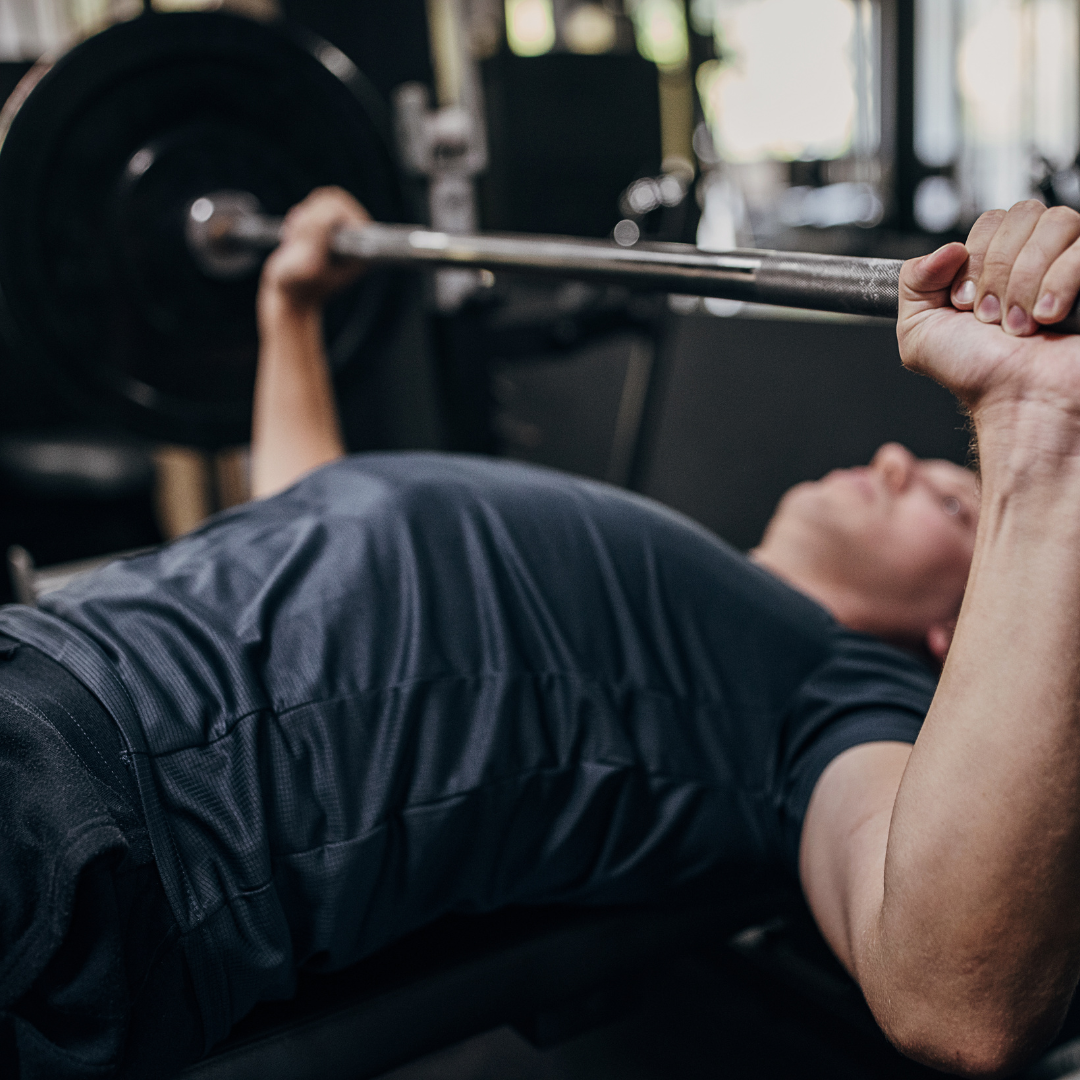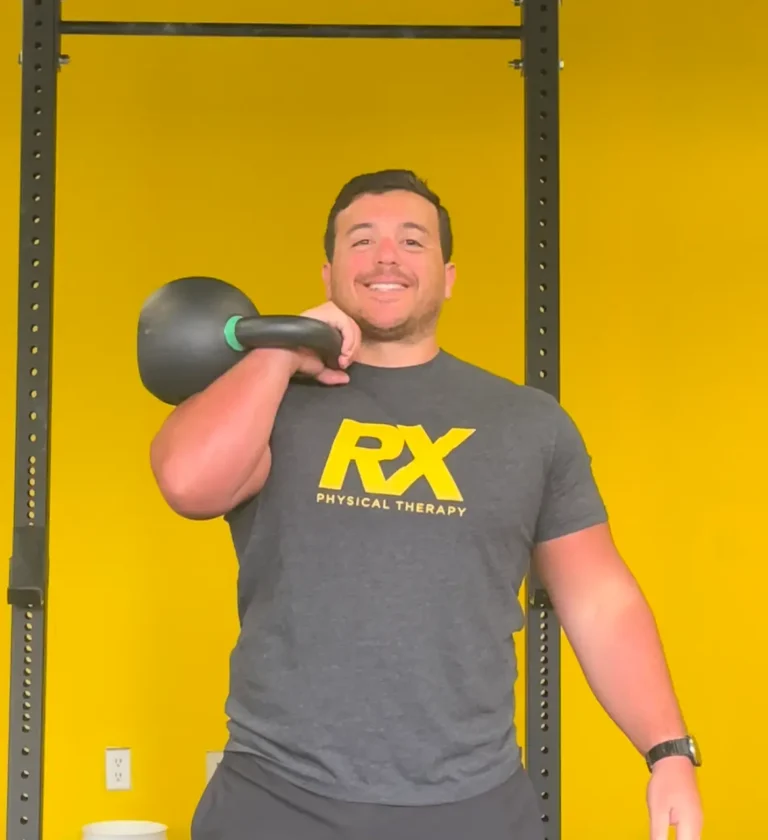Should You Stop Barbell Bench Pressing? 5 Warning Signs + How to Get Back Pain-Free
The barbell bench press is a staple in strength training programs — but it’s not always the best choice for everyone, all the time. If pressing heavy weight has started to feel more painful than powerful, it might be time to hit pause.
At RX PT, we see a lot of active adults and lifters pushing through shoulder, pec, or elbow pain with bench press. The reality? The barbell isn’t always the problem — but it can highlight underlying issues with mobility, control, or load management that need to be addressed before you keep pressing.
In this blog, we’ll cover:
- When to temporarily stop barbell bench pressing
- How to modify your training
- What a smart rehab and return-to-bench process looks like
🚩 5 Signs You Should Stop Barbell Bench Pressing (for Now)
Pain is a signal — not a punishment. If you’re experiencing any of the following, it’s a sign that your body needs a change in stimulus or a recovery period.
1. Pain in the Front of the Shoulder
This often points to irritation of the biceps tendon or rotator cuff. If pain is sharp, worsens with lowering the bar, or lingers after training, take it seriously.
2. Clicking or Popping in the Shoulder
Occasional clicks aren’t always a problem. But if they’re painful or accompanied by instability, it could suggest labral involvement or poor scapular control.
3. Loss of Strength or Control on One Side
If one side of your press starts lagging, shaking, or feels unstable, that asymmetry can overload your shoulder, elbow, or pec.
4. Elbow Pain That Flares Up After Pressing
This could be related to overuse, tendon irritation, or even issues upstream at the shoulder or thoracic spine.
5. You’ve Stopped Progressing — or You’re Regressing
If your numbers are dropping despite consistent effort, your body may be compensating around pain or inflammation.
✅ So… Should You Just Stop Bench Pressing Forever?
Definitely not. But pressing through pain and hoping it resolves on its own is a recipe for chronic irritation—or worse, a full-blown injury like a pec tear or rotator cuff strain.
The key is to hit pause intentionally, not indefinitely. Taking a strategic break gives your body time to heal and gives you the opportunity to fix the real problems: poor mechanics, mobility limitations, or strength imbalances that the barbell may be exposing.
That’s where a proper rehab and rebuild plan comes in. Below is a phased approach we use at RX PT to help active lifters return to barbell benching pain-free and even stronger than before.
🛠️ Step-by-Step Rehab Process to Get Back to Barbell Bench Pressing Pain-Free
✅ Phase 1: Offload & Control Inflammation
- Remove the barbell and substitute with pain-free horizontal push variations (e.g., floor press, landmine press, cable press)
- Use ice or contrast therapy if acute inflammation is present
- Begin isometric loading (e.g., static wall push) to promote blood flow without aggravating tissue
✅ Phase 2: Restore Mobility & Stability
- Assess and improve shoulder rotation, thoracic extension, and scapular control
- Address mobility deficits (e.g., lat tightness, pec minor restrictions)
- Incorporate exercises like:
- Open books and thoracic extension drills
- Serratus wall slides
- Controlled scapular push-ups
✅ Phase 3: Rebuild Pressing Mechanics
- Gradually reintroduce pressing patterns using dumbbells or kettlebells to allow more freedom of motion
- Emphasize tempo work and range control
- Add horizontal rowing volume to improve balance between push/pull
✅ Phase 4: Reload with a Smarter Progression
- Use neutral grip bars or specialty bars before returning to the straight bar
- Start with tempo bench (3–4 sec lowering) and feet-up bench to train control and minimize compensation
- Reintroduce barbell slowly:
- 2x/week max
- Leave 2–3 reps in reserve
- Prioritize form and tempo over load
✅ Phase 5: Maintain Resilience
- Keep mobility and rotator cuff work as part of your warm-up
- Continue to rotate pressing variations (e.g., DB incline, floor press) to reduce repetitive strain
- Build in regular movement screens or PT check-ins to catch issues early
Final Thoughts
The barbell bench press is a great tool — but only if your body is ready for it. Pain during or after pressing is never something to just “push through.”
If you’ve noticed nagging shoulder pain, strength loss, or clicking, it might be time to switch things up and follow a smart rehab strategy. With the right progression, you’ll not only return to benching — you’ll press stronger, more confidently, and with better mechanics than before.
🏋️ Want Help Getting Back Under the Bar?
At RX PT, we help active adults and athletes return to the lifts they love with less pain and better performance. Book a movement assessment or rehab consult today — and let’s build your strongest bench yet.
Check out our page for more information on shoulder injuries!


